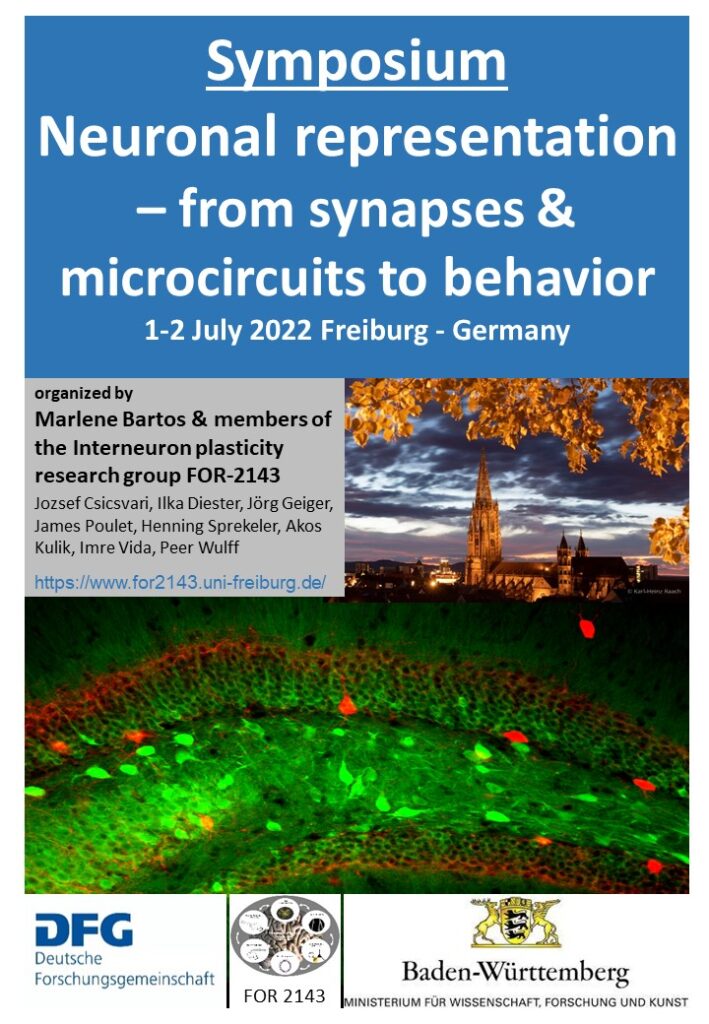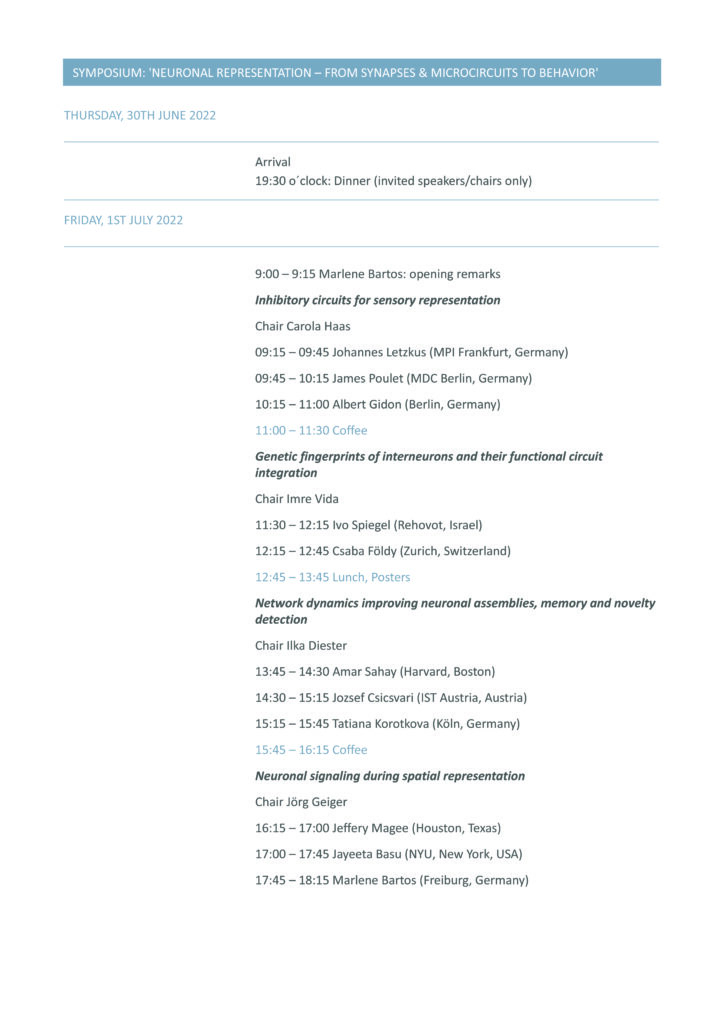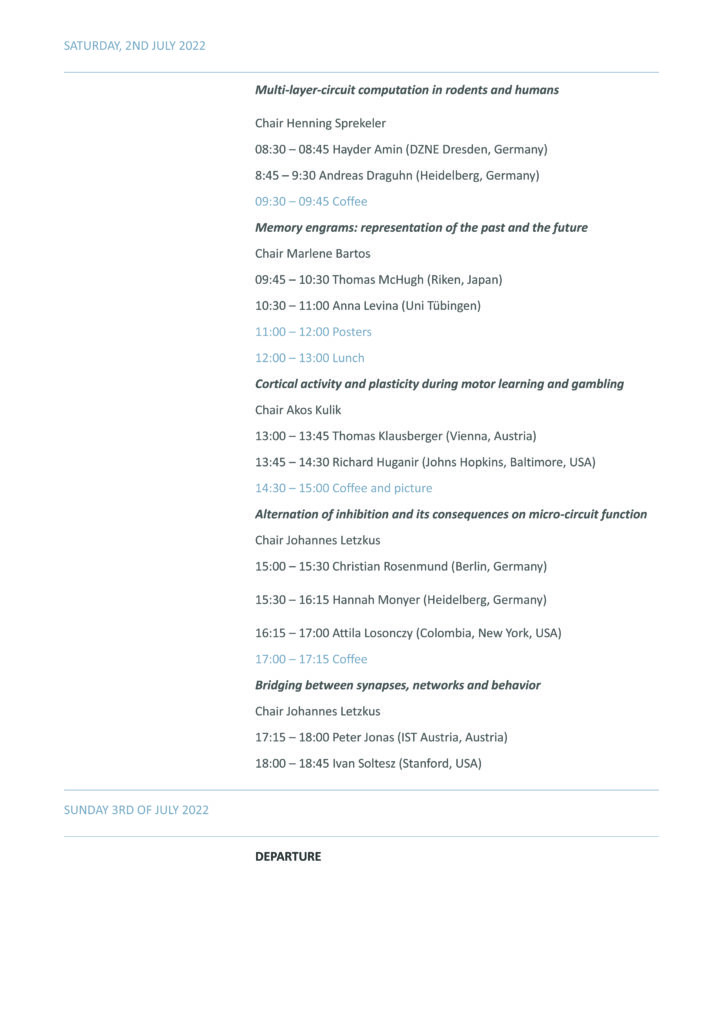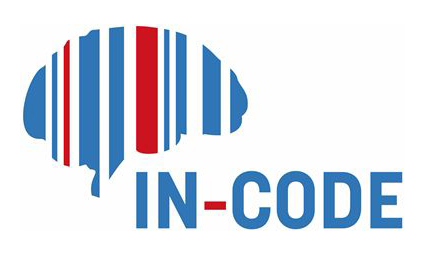

Symposia accepted to the meeting program:-
“Dendritic Inhibition – Role in Network Dynamics, Memory and Behavior”
“Building blocks of the brain: Insights into CNS circuits and ultrastructure”
“Dendritic Inhibition – Role in Network Dynamics, Memory and Behavior”
Symposium organized by Marlene Bartos (Freiburg, Germany) and Jörg Geiger (Charité, Berlin, Germany).
Speaker:
Matthew Larkum
Institute for Biology, Humboldt University, Berlin, Germany
Johannes Letzkus
Institute for Physiology I, Freiburg, Germany
Panayiota Poirazi
Institute for Molecular Biology & Biotechnology, Hellas, Greece
Marlene Bartos
Institute for Physiology I, Freiburg, Germany
Title:
The contribution of dendritic inhibition to cortical network dynamics
Top-down control of threat memory through neocortical layer 1
Inhibitory control of circuit dynamics by dendrite-targeting interneurons – insights from
computational models
Dendritic inhibition shapes encoding of space and context in the dentate gyrus of behaving
mice
The encoding of information in cortical networks markedly depends on active dendritic properties of pyramidal cells. Dendrites integrate synaptic inputs in non-linear fashions and regulate cellular signaling pathways underlying synaptic plasticity. Thus, dendrites play a key role in the processing and encoding of afferent information. These properties are markedly shaped and controlled by dendritic inhibition, provided by the various GABAergic inhibitory cells targeting specific compartments of pyramidal cell dendrites. Consequently, dendrite-targeting interneurons will affect various aspects of encoding of information on the level of individual cells and neuronal populations. In the here proposed symposium, we aim to highlight recent experimental and computational advances in the role of dendritic inhibition modulating the representation of environmental and sensory information in neuronal networks of the hippocampus and neocortex, respectively, and its influence on the execution of behavior.
This symposium will bridge between in vivo, in vitro and computational studies to highlight new insights on the role of the various dendrite-targeting interneurons such as somatostatin (SOM)-expressing and neuron-derived neurotrophic factor (NDNF)-positive interneurons on cortical network dynamics and the encoding of information on the level of single cells and neuronal populations during learning and the recall of stored information. The proposed speakers utilized a breadth of advanced experimental techniques including whole-cell and single unit recordings as well as 2-Photon population imaging in behaving animals, optogenetics, quantitative behavioral and computational analysis to obtain the data for the here proposed presentations on dendritic inhibition in shaping network dynamics relevant for the representation of behaviorally relevant information. Thus, with this symposium, we aim to highlight new insights on how dendritic inhibition may shape the spatiotemporal activity of single cells and cell populations during learning for the representation of space, context and threat perception.
“Building blocks of the brain: Insights into CNS circuits and ultrastructure”
Symposium organized by Matthias Haberl (Charité, Berlin, Germany) and Martina Schifferer (DNZE, Munich, Germany).
Speaker:
Yoshiyuki Kubota
NIPS, Okazaki, Japan
Kevin Briggman
Max Planck Institute, Bonn / CAESAR, Germany
Martina Schifferer
DZNE, Munich, Germany
Matthias Haberl
Charité, Berlin, Germany
Title:
Neuronal microcircuit in marmoset cortex studied with a large volume EM
Visual circuit wiring
Array tomography: trails to discovery in neuropathology
Organization principles of the neuronal ultrastructure revealed with volume electron microscopy
Form and function of neurons are closely intertwined, both for neural circuit wiring but also for the neuronal ultrastructure. Our comprehension of the principles that govern the structural organization in the brain has advanced significantly over the last decade with the help of critical technological advances. In particular volume electron microscopy (vEM) has enabled the reconstruction of larger neuronal circuits and revealed subcellular morphology. However, the complexity and scale of the neuronal structure and their circuits continue to elude us in many ways, still leaving crucial gaps in our understanding of randomness, controlled organization, and cell type specificity of neuronal circuit wiring and intracellular ultrastructure.
In this symposium the speakers will provide new insights into CNS circuits and ultrastructure. We will also show how these findings have been enabled by cutting-edge technological developments in the fields of vEM, ultra-high throughput electron microscopy and correlative light- and electron microscopy (CLEM). The speakers will show exciting new findings from meticulously constructed 3D cellular maps, synapses and neuronal wiring diagrams, across the brains of different species (fish, rodent and marmoset brain), revealing common features and differences across different cell types and species. Our goal is to share how novel technical approaches help to reveal ultrastructural building blocks of the nervous system.
Past Events
We are very please to announce
the 30th in the series of
will be given by
Professor Edvard Moser
December 12th, 2023

Gordon Research Conference
Inhibition in the CNS
“Assembly and Function of Inhibitory Neurons in Health and Disease”
July 16 – 21, 2023
Les Diablerets Conference Center, Eurotel Victoria, Les Diablerets, VD, Switzerland
For more information visit:
https://www.grc.org/inhibition-in-the-cns-conference/2023/
Many thanks to everyone who took part in making this a very exciting and productive conference!














